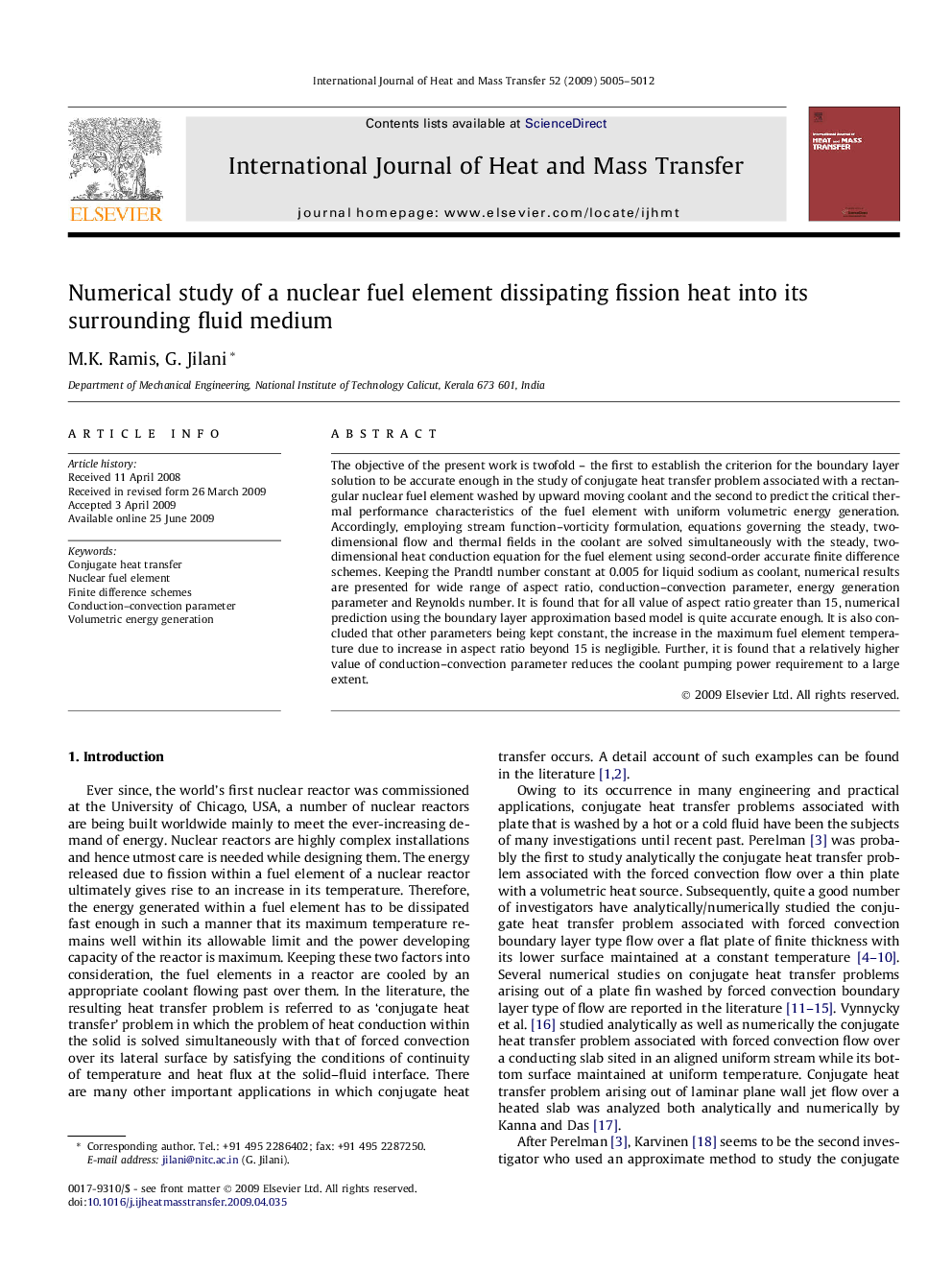| Article ID | Journal | Published Year | Pages | File Type |
|---|---|---|---|---|
| 661420 | International Journal of Heat and Mass Transfer | 2009 | 8 Pages |
The objective of the present work is twofold – the first to establish the criterion for the boundary layer solution to be accurate enough in the study of conjugate heat transfer problem associated with a rectangular nuclear fuel element washed by upward moving coolant and the second to predict the critical thermal performance characteristics of the fuel element with uniform volumetric energy generation. Accordingly, employing stream function–vorticity formulation, equations governing the steady, two-dimensional flow and thermal fields in the coolant are solved simultaneously with the steady, two-dimensional heat conduction equation for the fuel element using second-order accurate finite difference schemes. Keeping the Prandtl number constant at 0.005 for liquid sodium as coolant, numerical results are presented for wide range of aspect ratio, conduction–convection parameter, energy generation parameter and Reynolds number. It is found that for all value of aspect ratio greater than 15, numerical prediction using the boundary layer approximation based model is quite accurate enough. It is also concluded that other parameters being kept constant, the increase in the maximum fuel element temperature due to increase in aspect ratio beyond 15 is negligible. Further, it is found that a relatively higher value of conduction–convection parameter reduces the coolant pumping power requirement to a large extent.
